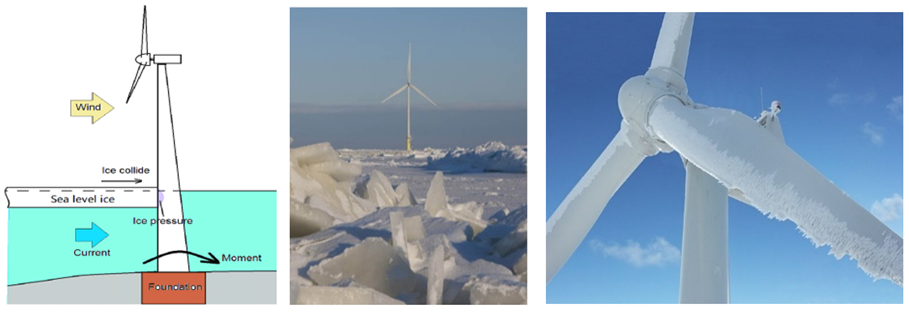Floating Offshore Wind Turbine Operations in Icing Conditions

The European Wind Energy Association (EWEA) report describes that EWEA’s new central scenario expects 320 GW of wind energy capacity to be installed in EU by 2030. Offshore wind energy can contribute significantly to reach this projected goal of EU. In early 2000, offshore wind constituted only 0.5% of the world energy supply, but it has increased significantly in recent years. Average Levelized Cost Of Energy (LCOE) of offshore wind has also decreased and was approximately 0.07 USD/kWh in 2020. By the end of 2018, the total cumulative offshore wind energy capacity in Europe reached 18,5 GW, which was spread across 105 offshore wind farms in 11 different European countries, predominantly in cold regions like the North Sea and the Baltic Sea. Wind Europe forecast 70 GW offshore wind capacity in the North Sea by 2030, which means there is also a strong potential of development of offshore wind energy along Norwegian part of Arctic/North sea. To date, large scale offshore wind energy projects have not been deployed in Arctic region of Norway, but in near future, there are possibilities of such development. Large international markets provide opportunities, as Norway’s resource base capabilities, knowledge and technology from the offshore petroleum and maritime sectors can provide opportunities for diversifications into international offshore markets. Export Credit Norway estimated the Norwegian firms’ share of the global offshore wind market at 3%-5%. Organizations representing the industry have stated ambitions of reaching a 10% global market share by 2030. This has raised a need for Norwegian researchers to better understand the associated environmental risks and develop advanced technologies suitable for ice prone Arctic climate. Most of the existing offshore wind parks are installed in shallow waters, typically water depth of 20 meter with a maximum distance of 30 km offshore. However, developments in new resource regions and smaller projects in floating offshore wind provide potential windows of opportunities. In cold regions like Norway, future floating offshore wind parks can be built at the sites where the synergic effect of the meteorological conditions and sea processes of cold environment will pose important constraints for a cost effective and reliable development of the wind energy production.
This PhD project aims to improve understanding of the aerodynamic and structural design of large offshore floating wind turbines leading to improvements enabling optimal operations in ice prone Arctic regions. The goal is to efficiently address the growing energy needs to Arctic region using environmentally friendly renewable energy resources. The knowledge gained in this project will advance understanding and develop new technological knowledge about floating offshore wind turbine operations in icing conditions.